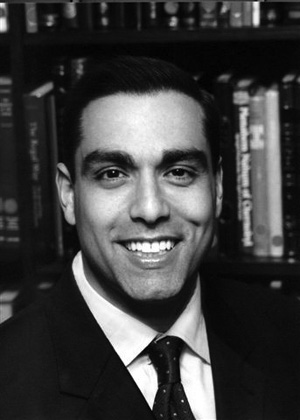A reflection on Shavout
Published May 16, 2012
“The act of revelation is a mystery, while the record of revelation is a literary fact, phrased in the language of [the hu]man.”
— Rabbi Abraham Joshua Heschel, God In Search Of Man
As a Rabbi, I never cease to be amazed by the questions posed by students — especially those encountering sacred texts for the first time. Their pristine, unsullied orientations always generate fresh perspectives and profound insights. Often, these “holy novices” take note of textual anomalies and inconsistencies that we “initiates” (sadly) gloss over because we have already accustomed ourselves to the traditional/conventional understandings of scripture.
ADVERTISEMENT
The other day, I received an emotional email from a young expectant mother who has recently committed herself to the process of acquiring a more “mature and sophisticated understanding” of Judaism. Part of this process included a review of the Chagim and Moadim (the Holy Days and Festivals) of our Tradition. Commendably, she wanted to prepare herself, in advance, for the not-too-distant future when she “will be called upon to convey the deepest meanings” of these sanctified occasions to her child.
With Shavuot — known also as Zman Matan Toratenu (the time when we celebrate the receiving of our Holy Writ) – on the horizon, this young mother-to-be began to review the Torah’s description of Maamad Har Sinai — the Revelation on Mount Sinai. Her reaction to the text is one with which any honest reader must concur. The tale is opaque; confusing, convoluted and obfuscated. From its content to its chronology, this element of our meta-narrative is wholly unclear. What disturbed her more than anything else was how such an “incoherent story” could serve as a core element of the master-story of the Jewish People? “How will my child ever feel an attachment to this poorly crafted account of the encounter between God and Am Yisrael? Couldn’t the authors (Author?) — who were aware that they were recording a foundational interaction that was being preserved for posterity — have penned a more consistent, more readily accessible rendition?”
As I read her thoughtful query over several times, I could not help but smile. She had provided me with the perfect opening to convey a remarkably important truth about the way in which our Holy Torah (and much of Jewish Tradition) functions. We are heirs to a heritage that intentionally and consciously cloaks, clouds and shrouds in an attempt to press us into a mode of searching and seeking. And once we enter this modality of intense examination, we come to realize that the absolute and definitive truths that we so often crave are neither available nor desirable. As the late Rabbi Abraham Joshua Heschel insightfully noted: “We must not try to read chapters in the Bible dealing with the event at Sinai as if they were texts in systematic theology. Its intention is to celebrate the mystery, to introduce us to it rather than to penetrate or to explain it. As a report about revelation the Bible itself is a Midrash”. (God In Search Of Man)
This profound concept is further explicated in a remarkably poignant teaching of the Mai Hashiloach, Rabbi Mordechai Yosef Leiner of Ishbitz, a Hassidic Rebbe of the 19th century. Commenting on the first of the Aseret HaDibrot (Ten Utterances), the Ishbitzer points out that God refers to Godself as “Anochi” rather than utilizing the more common form, “Ani” — “I (Anochi) am the Lord your God…”
ADVERTISEMENT
“The Torah does not state “Ani”, but rather “Anochi”. For if the word “Ani” was used in the verse, it would imply that the Holy Blessed One, revealed the totality of God’s Light to Israel during this epiphany, thus precluding the possibility of delving ever more deeply into God’s words — for everything had already been made known. The letter Khaf of the word “Anochi”, however, suggests that the Sinaitic Revelation was not a complete revelation. Rather, it was an unfinished and imperfect estimation and likeness of the Light, which God will reveal in the future. And as a person acquires ever deeper understandings of the Torah’s words, one realizes that until that moment one had been living in utter darkness. This is why day follows night. Day suggests that God momentarily opens for the
person the Gates of Wisdom. With nightfall, the person realizes that the current enlightenment will appear as night when compared to the enlightenment that will be achieved on the next day — and so on to eternity. Thus everything is night when compared to the Light, which the Holy Blessed One will make manifest in the future.” (Mai Hashiloach, Parashat Yitro)
Clarity, consistency and accessibility surely have their place within religious education and inculcation. Yet, when it comes to describing the nature of the God and the Almighty’s attempts at communication with humanity — the utterly impossible encounter of the Infinite and the finite — we might be best served by assuming a posture akin to that of the Italian Philosopher, Gianni Vattimo’s pensiero debole (weak thought) and claim, as did he regarding hermeneutics (the study of the theory and practice of interpretation), that when it comes to Revelation: “…there are no facts only interpretations — and this too is an interpretation”.
For in the end, it seems to me that our highest and noblest calling, our most sacred of tasks as Jewish parents and teachers, is not to provide simple solutions that mitigate complexity, but rather to model to our children and students the need to continually search, seek and wrestle so that we might merit a momentary, fleeting glimpse of the Divine Light — the wondrous revelations that are occurring all around us at every moment. As we are taught in Pirkei Avot (Ethics of the Sages): “Lefum Tzaara Agra — According to the exertion is the reward.”















